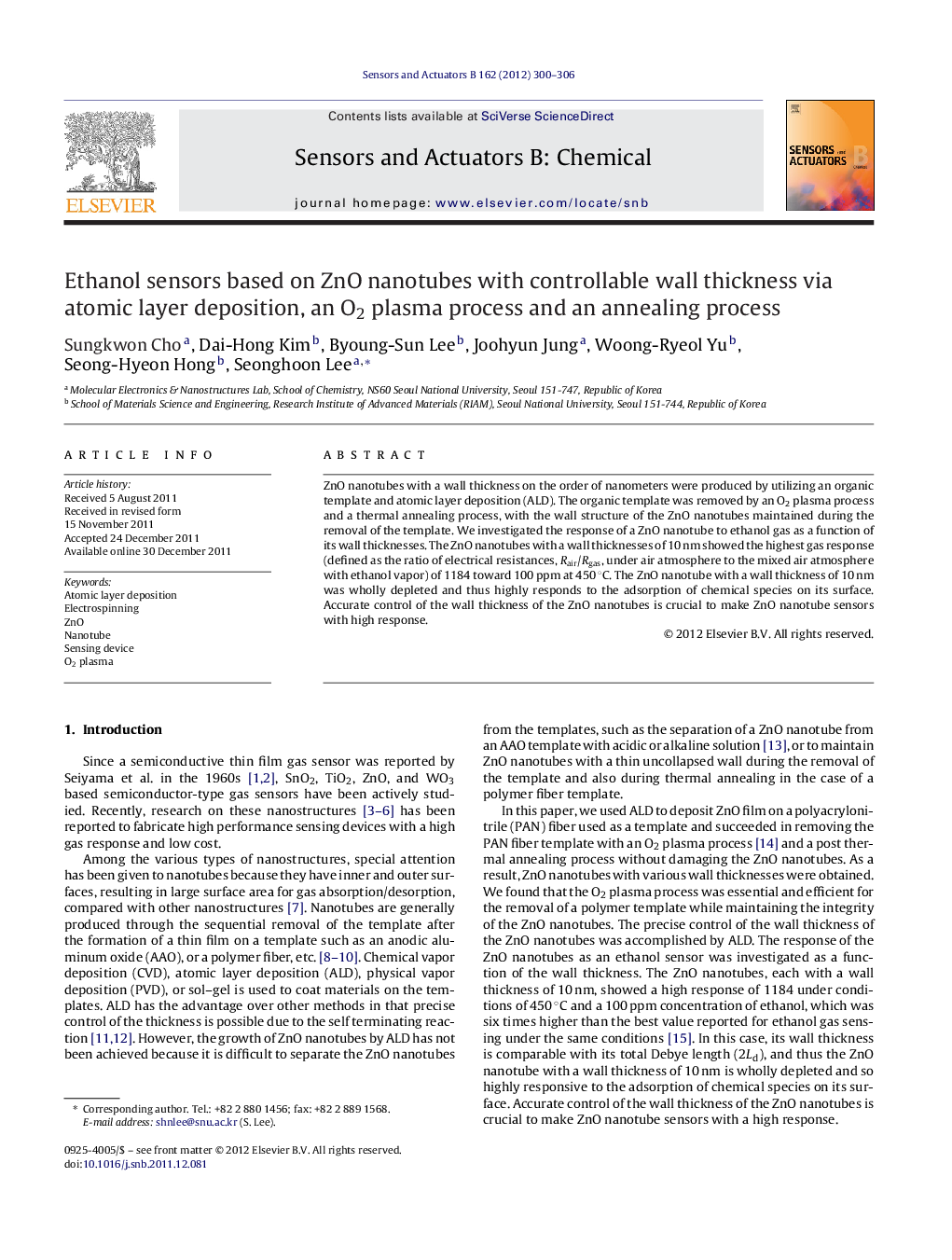| Article ID | Journal | Published Year | Pages | File Type |
|---|---|---|---|---|
| 740707 | Sensors and Actuators B: Chemical | 2012 | 7 Pages |
ZnO nanotubes with a wall thickness on the order of nanometers were produced by utilizing an organic template and atomic layer deposition (ALD). The organic template was removed by an O2 plasma process and a thermal annealing process, with the wall structure of the ZnO nanotubes maintained during the removal of the template. We investigated the response of a ZnO nanotube to ethanol gas as a function of its wall thicknesses. The ZnO nanotubes with a wall thicknesses of 10 nm showed the highest gas response (defined as the ratio of electrical resistances, Rair/Rgas, under air atmosphere to the mixed air atmosphere with ethanol vapor) of 1184 toward 100 ppm at 450 °C. The ZnO nanotube with a wall thickness of 10 nm was wholly depleted and thus highly responds to the adsorption of chemical species on its surface. Accurate control of the wall thickness of the ZnO nanotubes is crucial to make ZnO nanotube sensors with high response.
